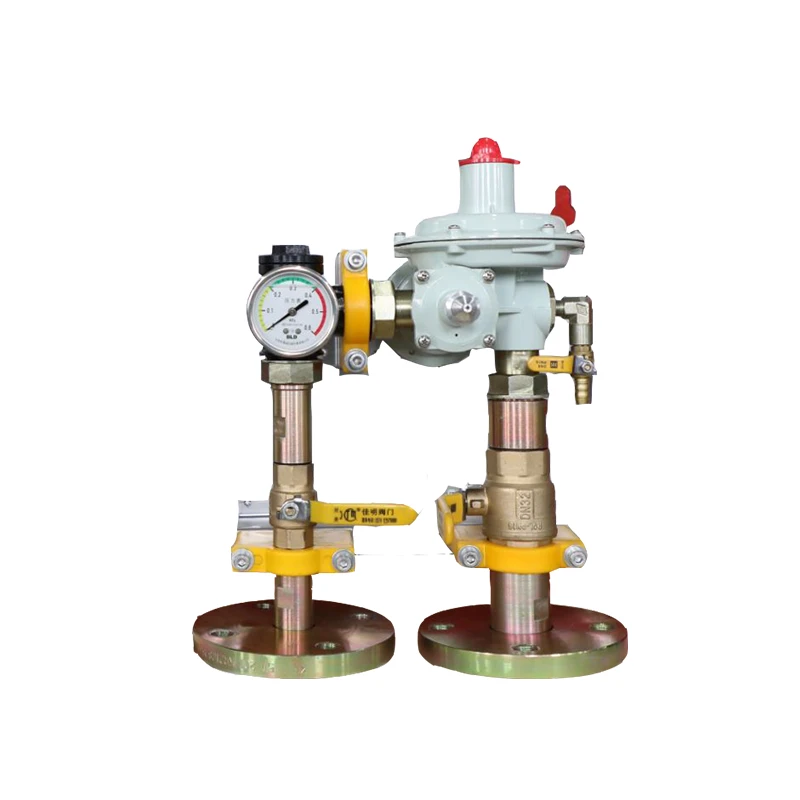
Dec . 05, 2024 10:28
Back to list
صمام تخفيض الضغط
Understanding Pressure Relief Valves A Key Component in Safety Systems
Pressure relief valves (PRVs) are essential components in various industrial applications, serving as pivotal safety devices that protect systems from excessive pressure buildup. Whether in oil and gas, chemical processing, or even HVAC systems, these valves play a crucial role in preventing catastrophic failures that could lead to injuries, equipment damage, or environmental disasters.
What is a Pressure Relief Valve?
A pressure relief valve is a device designed to open at a predetermined pressure to release excess pressure from a system. When the internal pressure exceeds a set limit, the valve opens, allowing fluid (liquid or gas) to escape to the atmosphere or a designated vent. Once the pressure drops back to an acceptable level, the valve closes, ensuring normal operation resumes. This functionality makes PRVs critical for maintaining pressure within safe operating limits.
Types of Pressure Relief Valves
There are several types of pressure relief valves, each suited for specific applications. The most common types include
1. Spring-loaded Pressure Relief Valves These valves use a spring mechanism to maintain the seal against pressure. When the pressure exceeds the set point, the spring compresses, allowing the valve to open. They are widely used due to their reliability and simplicity.
.
3. Balanced Bellows Pressure Relief Valves This design minimizes the effects of back pressure on the valve operation. They are particularly useful in applications where back pressure varies significantly.
صمام تخفيض الضغط

Importance of Pressure Relief Valves
The significance of pressure relief valves cannot be overstated. They are designed to mitigate risks by ensuring that pressure does not exceed safe levels, which can lead to explosions or other hazardous conditions. The failure of a PRV can have dire consequences, including loss of life, significant financial costs, and damage to the environment.
In industries where flammable gases or hazardous chemicals are processed, the importance of PRVs is magnified. Regular maintenance and testing of these valves are critical to ensure they function correctly when needed. Many regulations and standards require organizations to conduct periodic inspections and maintenance on their pressure relief systems.
Installation and Maintenance Considerations
Proper installation of pressure relief valves is essential for their effectiveness. The valve should be sized appropriately for the application, and its location should allow for unrestricted fluid flow. Additionally, it is vital to ensure that any piping connected to the valve can handle the fluid being released without causing additional hazards.
Routine maintenance should include inspections for wear and tear, corrosion, and proper sealing functionality. Operators should also check for any obstructions that may prevent the valve from opening fully or closing properly. Regular testing under simulated conditions can help verify that the valve will operate effectively in an actual emergency.
Conclusion
In summary, pressure relief valves are a fundamental component of safety systems across various industries. Their ability to maintain safe pressure levels protects people, equipment, and the environment from potentially catastrophic incidents. As such, they require proper selection, installation, and maintenance to ensure reliability and effectiveness. Organizations must prioritize these aspects to foster a culture of safety and compliance within their operational practices. By doing so, they can significantly mitigate risks associated with pressure-related hazards.
Next:
Latest news
-
Safety Valve Spring-Loaded Design Overpressure ProtectionNewsJul.25,2025
-
Precision Voltage Regulator AC5 Accuracy Grade PerformanceNewsJul.25,2025
-
Natural Gas Pressure Regulating Skid Industrial Pipeline ApplicationsNewsJul.25,2025
-
Natural Gas Filter Stainless Steel Mesh Element DesignNewsJul.25,2025
-
Gas Pressure Regulator Valve Direct-Acting Spring-Loaded DesignNewsJul.25,2025
-
Decompression Equipment Multi-Stage Heat Exchange System DesignNewsJul.25,2025

